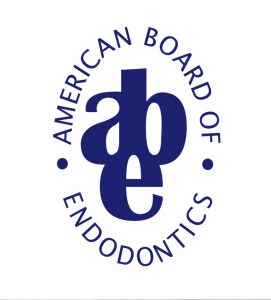General Instructions
Home Care Instructions
Your tooth and surrounding gum tissue may be slightly tender for several days as a result of manipulation during treatment and previous condition of your tooth. This tenderness is normal and is no cause for alarm. Do not chew food on the affected side until your endodontic therapy is completed and your tooth is covered with a protective restoration provided by your restorative dentist. You may continue your regular dental hygiene regimen. Discomfort may be alleviated by taking ibuprofen (Motrin/Advil), aspirin, or acetaminophen (Tylenol) as directed.
NOTE: Alcohol intake is not advised while taking any of these medications. Should you experience discomfort that cannot be controlled with the above listed medications, or should swelling develop, please contact this office immediately.
ONLY in case of emergency please call or text Dr. Ballagas at: (407)-430-5919
Endodontic Instructions
Post-Operative Instructions
One of the following was explained to you following your treatment at our office. Please call if you have any doubts of which instructions pertain to your case.
The treatment on your tooth is not complete. It is essential for you to return to our office for further
treatment. Do not eat anything for the first hour following the procedure and then eat soft foods only for the
rest of the day. It is advisable to chew on the opposite side until treatment is completed. Avoid sticky or hard
foods that require hard chewing until your dentist place a permanent restoration. Even if you were not
experiencing any discomfort prior to treatment, it is normal for you to experience some degree of discomfort for a few days. This tenderness is normal and is no cause for alarm. If your temporary filling comes out, please call
the office to schedule an appointment to replace it or purchase a temporary filling material sold at your local
pharmacy if it becomes displaced during non-business hours.
Your root canal is now completed. The canal or canals have been sealed and nature must now have time to
repair the damage that the original irritant produced. Do not chew on the tooth until all the tenderness is gone.
Although the roots are permanently sealed, the outer surface is filled with temporary cement, which is hard and
may last for many weeks. It is advisable to see your regular dentist within a month to restore the tooth
permanently. Avoid sticky or hard foods that require hard chewing until your dentist place a permanent
restoration. A final restoration (crown, onlay, filling) will give the tooth its necessary protection. A letter and
copy of your final x-ray will be sent to your general dentist. Please contact your general dentist to schedule
your permanent restoration.
Your root canal is now completed. The canal or canals have been sealed and nature must now have time to
repair the damage that the original irritant produced. Do not chew on the tooth until all the tenderness is gone.
We have placed a permanent filling in your tooth. You do not need to see your dentist for a new restoration,
but you should return for regular check ups. A letter and copy of your final x-ray will be sent to your general
dentist.
Discomfort or pain may be alleviated by taking ibuprofen (Advil), aspirin, or acetaminophen (Tylenol) as directed. A
stronger pain medication may be prescribed to you as needed.
*For 3 to 4 days, even if you are not feeling any pain take 800 mg Ibuprofen (Advil, Motrin) every 6 hours.
*If you need stronger pain medication than this, keep taking Ibuprofen 800 mg every 6 hours and take 1000 mg
Acetaminophen (Tylenol). If you still have pain please call the office.
*If you were prescribed an antibiotic (penicillin, amoxicillin, Clyndamycin, ect) take it as prescribed and complete the
prescription. Do not stop taking it when you feel better. As with any medication, if you notice itching, rash, upset
stomach or DIFFICULTY BREATHING, stop the medication immediately and contact the doctor.
ONLY in case of emergency please call or text Dr. Ballagas at: (407)-430-5919
Surgical Instructions
INSTRUCTIONS FOLLOWING ENDODONTIC SURGERY
- Avoid strenuous activities for the remainder of the day. Avoid any unnecessary lifting of the surgical site. Resume normal activities a day or so after surgery, or as directed by doctor. Please keep physical activities to a minimum immediately following surgery.
- Do not disturb the surgical site. We know that you are anxious to see the results of your surgery, but please do not forcibly pull your lips or cheeks away to inspect the surgical site. This action could possibly tear your sutures.
- BLEEDING - Some bleeding or redness in the saliva is normal for 24 - 48 hours. Excessive bleeding can be controlled by placing a gauze pad over the surgical site and biting down firmly. Continue pressure for 30 minutes. If bleeding continues, place a moist tea bag over the surgical site for 30 minutes (the tannic acid in the tea helps to form a clot). If bleeding persists, please call the office or the doctor's emergency number immediately at 407-430-5919.
- SWELLING - Swelling can be a normal occurrence after surgery. Apply ice to the surgical site for fifteen minutes on, fifteen minutes off for four to six hours after surgery; this will minimize swelling and discoloration. Applications after this period will have only slightly benefit. To minimize swelling keep your head elevated, even while sleeping. Use several pillows and prop your head and torso upright while relaxing or sleeping.
- DIET - Eat meals at regular intervals but avoid food that may traumatize the incision site. Avoid spicy and hot (temperature) foods. Good foods to eat are eggs, soup, pancakes, milkshakes or yogurt. During the first day eat foods that will not require vigorous chewing or cutting with front teeth.
- HYGIENE – DO NOT RINSE YOUR MOUTH ON THE DAY OF SURGERY. Do not start using the prescribed mouth rinse (Peridex) until the next day after your surgery. Rinse 2x a day with Peridex for one week and gently rinse the treated area with warm salt water after meals. Use one-half teaspoon of salt in a large glass of warm water. You may and should brush your teeth in the treated area excluding the gums. Do not use dental floss or a water irrigation device in the area in which surgery was performed. Follow your normal home care routine while avoiding the surgical site for a few days after your treatment.
- MEDICATIONS - You may have been given prescriptions for one or more pain medications to help manage severe discomfort following your surgery. However, in some cases moderate discomfort can be controlled with Tylenol or an anti-inflammatory medication (Advil/Motrin/ Ibuprofen 800mg – One tablet every 6-8 hours for 2 days). Anti-inflammatory medications can be alternated with a narcotic medication in most cases. Take all medications as prescribed and in the manner indicated by your doctor. If you have been placed on antibiotics, take them as directed. If you have an unfavorable reaction such as a rash, please discontinue the medication and call the office for further instructions.
- Return to our office for follow up as directed:
WHAT TO EXPECT:
- Although severe pain seldom occurs, some discomfort will usually be present. Use the anti-inflammatory medication as directed. Taking one Aleve twice a day until the suture removal appointment will help avoid discomfort and swelling. Please inform us if you are experiencing significant discomfort or have a temperature.
- There will be some swelling and discoloration for three to five days. This is a normal part of the healing process.
- There is often temporary loss of feeling in the surgical site. Please do not be alarmed.
- The treated tooth may feel loose for a brief time. Do not attempt to move it.
ONLY in case of emergency please call or text Dr. Ballagas at: (407)-430-5919
Sedation Instructions
Oral Sedation Information and Consent
Triazolam (Halcion), although usually prescribed as a sleeping pill, is a medication that can greatly minimize stress and anxiety that may be associated with a dental procedure. In a controlled study of patients presenting for oral surgery,
those who received Triazolam had significantly less irregular heartbeats (dysrhythmias) and lower resting heart rate than
patients not receiving the drug. In a relaxed state, you will be able to communicate with the endodontist while
treatment is being performed. Even though it is safe, effective, and wears-off rapidly after the dental visit, you should be
aware of some important precautions and considerations associated with taking Triazolam:
1. The onset of Triazolam is 15 to 30 minutes. DO NOT DRIVE after you taken the medication. DO NOT TAKE A
TAXI, UBER, OR LYFT UNACCOMPANIED! You must have an escort to and from the dental appointment, who
can remain on the premises while your dental procedure is completed or chose to leave and come back once
treatment is done. After you return home, your escort should remain with you for several hours because of
possible disorientation and possible injury from falling. On the way home from your appointment, your car seat
should be reclined. When home, lie down with your head slightly elevated. Be prepared to take a nap when you
return home. Most people begin to feel normal after 6-8 hours. For safety, do not drive or operate machinery
the remainder of the day. Wait until the next day.
2. This medication should not be used if:
You are hypersensitive to benzodiazepines (Valium, Ativan, Versed)
You are pregnant.
You have liver or kidney disease.
Tell the endodontist if you are taking the following medications as they can adversely interact with triazolam:
nefazodone (Serzone), cimetidine (Tagamet, Peptol) Levodopa (Dopar or Larodopa)for Parkinson’s Disease,
antihistamines (Benadryl, Tavist-D), Verapamil (Calan), Diltiazem (Cardizem), Erythromycin or azole antimycotics
(Nizoral, Biazin, Sporanox), HIV drugs (Indinavir and Nelfinovir), and alcohol. Of course, taking recreational and/or illicit
drugs can cause untold reactions.
3. Side Effects: Include amnesia, drowsiness, incoordination, light-headedness.
4. You should not eat heavily before your appointment. You may take the medication with a small amount of food
such as juice, toast, etc. Taking it with too much food may impair absorption of the drug.
I understand these considerations and I am willing to abide by the conditions stated above. I have had the opportunity
to ask questions and had them answered to my satisfaction by the doctor and staff at the time of my consultation
before taking the medication.
Informed Consent for Nitrous Oxide Sedation
Introduction: Nitrous oxide is a colorless, slightly sweet gas that is used during dental treatment for relaxation and anxiety relief. When inhaled, it can induce feelings of euphoria and sedation. It also can produce sensations of drowsiness, warmth and tingling in the hands, feet, and/or about the mouth. In the dental setting, it will not induce unconsciousness. You will be able to swallow, talk and cough as needed.
Contradictions: Please let us know if you have any of the following medical conditions, because we may not be able to safely use nitrous oxide: Congestive heart failure, chronic obtrusive pulmonary disease (COPD), chronic bronchitis, emphysema, chronic asthma, bronchiectasis, pregnancy, hepatitis B or C, tuberculosis, macrocytic anemia, immune diseases, respiratory diseases, middle ear infections, or a history of substance abuse. Also, if you suffer from claustrophobia, you may choose not to use nitrous oxide.
Preoperative Guidelines: Nitrous oxide is administered through a nasal mask. You must be able to breathe through the nose (blocked nasal passages, colds, etc., defeat the purpose of using nitrous oxide for relaxation). Avoid eating at least 4 hours prior to the dental appointment. Avoid caffeinated products before coming in for treatment. Nitrous oxide can cause “stomach butterflies” (nausea), which may result in vomiting. On the day of your appointment do not take any antidepressants (unless your dentist is aware of them) or other sedatives unless prescribed by your dentist.
Instructions during Nitrous Oxide use: Your mask must remain firmly in place during the entire period. Do not breathe through your mouth. Breathe through your nose only. Notify the doctor if you are experiencing difficulty in breathing through your nose. No talking is allowed while nitrous oxide is being used. Talking blows nitrous oxide into the room, lessening the desired effect for you and exposing the dental staff to the nitrous effects.
Postoperative Guidelines: Recovery from nitrous oxide sedation is rapid. The gas will be flushed from your system with oxygen. If you feel dizzy after the sedation, remain seated, and the sensation should pass in a few minutes. Do not leave the office until your head feels clear and you are able to function (i.e., walk and drive) safely.
Risks of Nitrous Oxide: You may feel nauseated, dizzy, drowsy or claustrophobic during and after sedation.
Alternatives to Nitrous Oxide: You may choose not to use nitrous oxide and complete your dental treatment without any treatment for anxiety. You may choose, if your dentist feels this is an option for you, to take an oral sedative to relieve your anxiety. This consent is valid for a period of twelve (12) months. I may withdraw my consent at any time.
“I understand the previous statements and have had my questions answered.”
Internal Bleaching
INTERNAL BLEACHING POST OPERATIVE INSTRUCTIONS
Some patients experience sensitivity after bleaching. This sensitivity normally lasts 48–72 hours however
it is not unusual for it to linger for a week or so. We recommend over the counter pain medications such
as Ibuprofen, Advil or Tylenol to counteract any discomfort you may be having. Avoid acidic fruit juices like
orange juice until the sensitivity has dissipated.
Sensodyne Toothpaste is recommended for brushing should you experience sensitivity.
Chewing “sugarless” gum will help as it will reduce the peroxide levels and help with the sensitivity.
DO NOT CONSUME dark or yellow staining substances such as:
COFFEE
TEA
MUSTARD
KETCHUP
RED WINE
DARK COLORED SOFT DRINKS
BERRIES
RED SAUCES
SOY SAUSE
TOBACCO PRODUCTS
Botox
Botox POST-Treatment Instructions
The guidelines to follow post treatment have been followed for years, and are still employed today to prevent the possible side effects of ptosis (drooping of the eyelids). These measures should minimize the possibility of ptosis.
-No straining, heavy lifting, vigorous exercise for 3-4 hours following treatment. It is now known that it takes the toxin approximately 2 hours to bind itself to the nerve to start its work, and because we do not want to increase circulation to that are to wash away the Botox® from where it was injected.
-Avoid manipulation of area for 3-4 hours following treatment. (For the same reasons listed above.) This includes not doing a facial peel or micro-dermabrasion after treatment with Botox®.
- Stay out of the sun for approximately four (4) hours following Botox treatment.
-It can take 2-10 days to take full effect. It is recommended that the patient schedule an appointment no later than 2 weeks after treatment. Enhancements (additional units of Botox®) can be administered if needed at same unit charge as original treatment.
Make-up may be applied before leaving the office.
 Dr. Frances Ballagas
Dr. Frances Ballagas
7352 Stonerock Cir Suite B
Orlando, FL 32819

 Email:
Email: